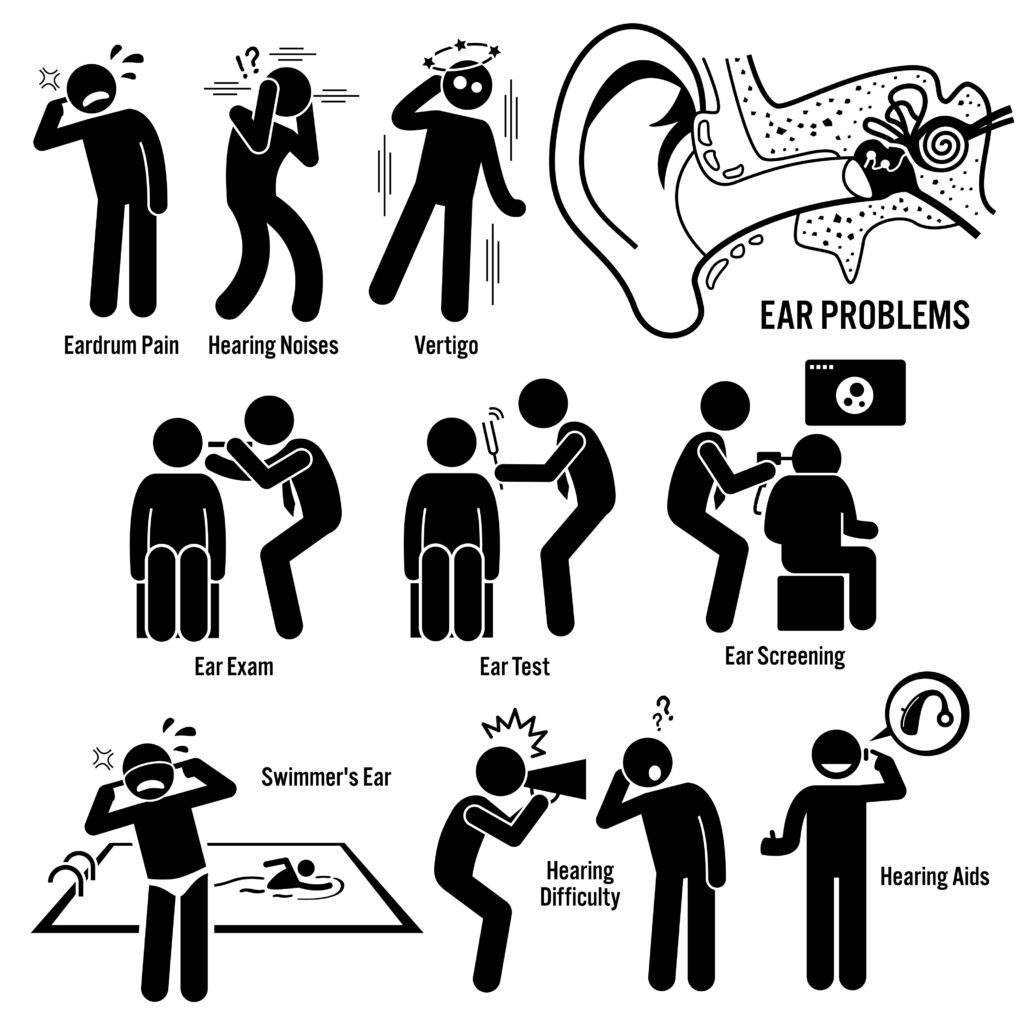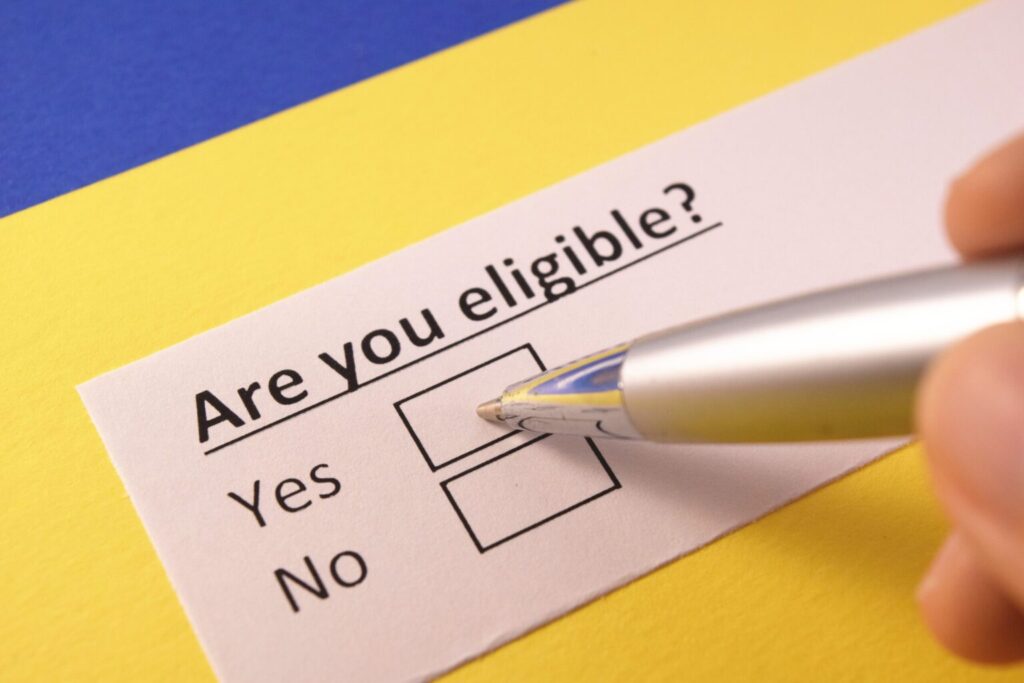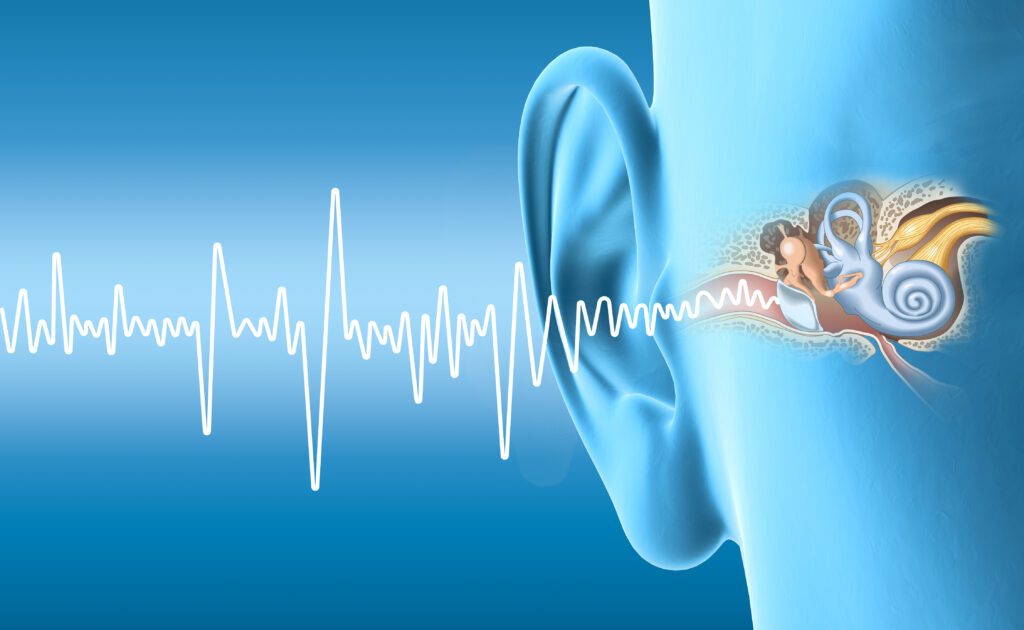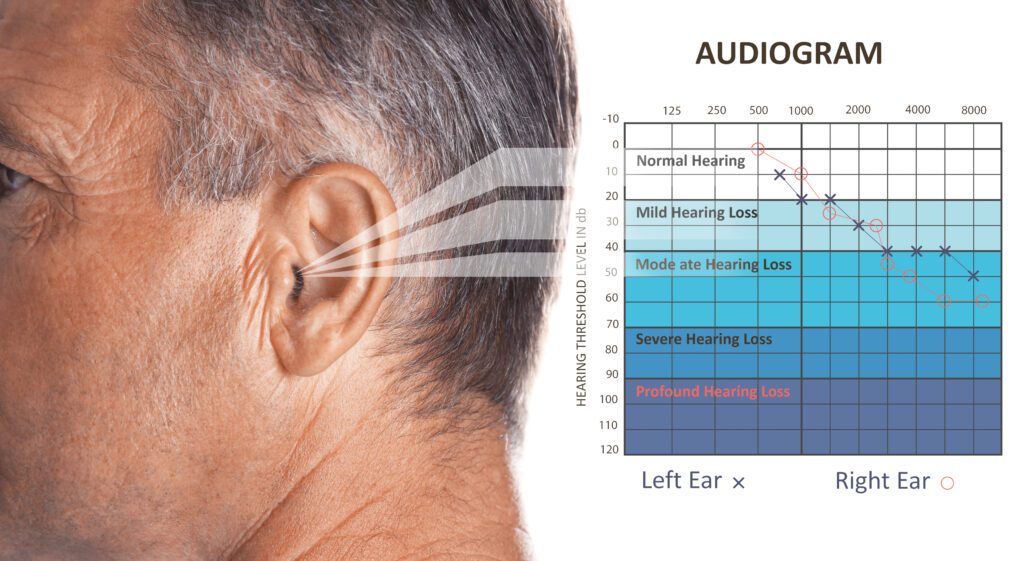Looking for Expert-Level VA Claim Answers?📱Call Us Now! 737-295-2226
In this post, we’ll explore how to get a VA Rating for Hearing Loss and Tinnitus, including the 3 best ways to prove your Hearing Loss and Tinnitus was due to your military service.
What’s the bottom line?
Well, getting a service connected Hearing Loss VA Rating is TOUGH, especially if you’ve been out of the military for longer than 12 months…
Not only is Hearing Loss one of the hardest conditions to get service connected, it’s also one of most difficult conditions to get rated above 0 percent.

Why?
Because the rating criteria is so severe; you darn near need to be deaf to get a VA Rating for Hearing Loss above 0% (more on that below).
And there’s BREAKING NEWS—The VA has proposed to eliminate the separate Diagnostic Code (DC) for Tinnitus, and instead rate Tinnitus under Hearing Loss as follows:
“DC 6100: Hearing Loss that is not caused by another condition is rated based on the hearing loss rating system. If Tinnitus (e.g., the ringing sound in the ear) is present along with the hearing loss, the minimum rating is 10%.”
Unfortunately, this proposal will harm many transitioning military and veterans alike because most of us have Tinnitus without Hearing Loss, but the new rating criteria under Hearing Loss will require BOTH to get the minimum compensable rating of 10%.
The good news is if you’re already service connected for Tinnitus under DC 6260, you’ve been “grandfathered-in” and won’t be re-evaluated under the new disability rating system.
Okay, let’s explore these major changes as well as how to get a VA Rating for Hearing Loss (+ Tinnitus), to include expert-level tips to get both conditions service connected under the law.
- What is Hearing Loss and Tinnitus in Veterans?
- Common Signs and Symptoms of Hearing Loss and Tinnitus
- VA Rating for Hearing Loss and Tinnitus: Basic Eligibility Criteria
- Are Hearing Loss and Tinnitus a VA Disability?
- How Do I Get a VA Rating for Hearing Loss?
- How Does the VA Evaluate Hearing Loss?
- Here’s the step-by-step process used to assign a proper VA Rating for Hearing Loss:
- Table #1: Numeric Designation of Hearing Impairment Based on Speech Discrimination Percentage and Puretone Threshold Average (PTA)
- Table #2: The VA Hearing Loss Compensation Table
- Table #3: Numeric Designation of Hearing Impairment Based Only on Puretone Threshold Average (PTA)
- Where Can I Find the Hearing Loss and Tinnitus Disability Benefits Questionnaire (DBQ)?
- What Are the VA Disability Ratings for Hearing Loss and Tinnitus?
- Does the VA Rate Hearing Loss and Tinnitus the Same?
- Are There Any VA Secondary Conditions to Hearing Loss and Tinnitus?
- What Should I Expect at a VA C&P Exam for Hearing Loss and Tinnitus?
- What Should I Expect at a VA Tinnitus C&P Exam?
- About the Author
What is Hearing Loss and Tinnitus in Veterans?

Hearing Loss typically worsens with age (Presbycusis, which is age-related Hearing Loss) and is very common.
In fact, roughly 50% of the people in the U.S. above 65 years of age have some degree of Hearing Loss.
Hearing Loss falls into one of three types:
- Conductive (involves outer or middle ear)
- Sensorineural (involves inner ear)
- Mixed (combination of the two)
Chronic exposure to loud noises is also a significant factor in Hearing Loss (e.g., flight lines, military gun ranges, deployments, etc.).
Hearing Loss and Tinnitus are not the same things.
Hearing Loss is generally “objective” meaning it can be detected during an Audiogram versus Tinnitus is typically “subjective” meaning it can’t be found on any test.
Tinnitus is no laughing matter: It can make your life miserable and negatively impact your work, life, and social functioning.
Tinnitus is when veteran’s experience ringing in one or both ears.
Most veteran’s have “Subjective Tinnitus,” which only you can hear and is undetectable during a hearing test.
Tinnitus is a very common condition that affects up to 20% of Americans.
Common Signs and Symptoms of Hearing Loss and Tinnitus

In accordance with the Mayo Clinic, signs and symptoms of Hearing Loss and Tinnitus include:
- Muffling of speech and other sounds
- Difficulty understanding words, especially with background noise
- Trouble hearing specific words
- Frequently asking others to speak more slowly, clearly, and loudly
- Turning up the volume of the television, radio, or mobile device
- Withdrawal from conversations
- Avoidance of social settings
- Buzzing
- Roaring
- Clicking
- Hissing
- Humming
VA Rating for Hearing Loss and Tinnitus: Basic Eligibility Criteria

To be eligible for a VA disability rating for Hearing Loss and Tinnitus, a veteran must meet three (3) criteria by law:
- #1. Medical diagnosis of Hearing Loss and Tinnitus, in a medical record (Service Treatment Records, VA medical records, or private medical records)
- #2. Your Hearing Loss and Tinnitus was caused or made worse by your active-duty military service OR by another service connected disability for secondary service connection (“Nexus” for service connection)
- #3. Persistent and recurring symptoms of Hearing Loss and Tinnitus (“Severity of Symptoms”) in terms of Frequency, Severity, and Duration to include any functional impacts.
If you think you have Hearing Loss with Tinnitus, but don’t have a medical diagnosis, pick-up the phone and call the VA health facility nearest you to make an appointment right away!
If you’re trying to increase your VA rating for Hearing Loss and Tinnitus, you need to prove to the VA that your symptoms are now worse and warrant the higher rating criteria by law.
The #1 best way to increase your VA rating for Hearing Loss is to have objective medical evidence (e.g., Audiogram results) to show your symptoms have worsened over time.
Tinnitus is either rated at 10% or nothing at all, although that’s about to change.
Are Hearing Loss and Tinnitus a VA Disability?

Yes, Hearing Loss is the #2 overall VA claim and Tinnitus is #1, and are currently rated separately.
The VA rates Hearing Loss under CFR Title 38, Part 4, Schedule for Rating Disabilities, DC 6100, Hearing Loss.
VA Ratings for Hearing Loss range from 0 percent to 100 percent, with breaks at 10 percent, 20 percent, 30 percent, 40 percent, 50 percent, 60 percent, 70 percent, 80 percent, and 90 percent although the average VA rating for Hearing Loss is 10 percent, and many veterans have a 0 percent rating.
The highest scheduler rating for Hearing Loss is 100 percent, which means you have total deafness in both ears.
Tinnitus is also a VA disability and can be rated at 10%.
There is no higher or lower rating as of this writing; however, big changes are coming!
How Do I Get a VA Rating for Hearing Loss?

There are 3 primary ways a veteran can get a VA disability rating for Hearing Loss:
#1: Direct Service Connection for Hearing Loss with a rating of 0%, 10%, 20%, 30%, 40%, 50%, 60%, 70%, 80%, 90%, or 100%; however, the average VA rating for Hearing Loss is 10%, and many veterans have a 0% rating, if they’re lucky enough to get their Hearing Loss service connected. Direct Service Connection means an in-service event, injury, or disease related to your military service caused you to develop Hearing Loss.
#2: Secondary Service Connection for Hearing Loss with a VA rating of 0%, 10%, 20%, 30%, 40%, 50%, 60%, 70%, 80%, 90%, or 100%. This is uncommon as Hearing Loss is mainly directly service connected.
#3. Aggravation of a Pre-Service Disability for Hearing Loss. Perhaps you entered active duty service with minor Hearing Loss, but the military made it worse. If your military service “aggravated” the condition beyond its natural progression, you can get Hearing Loss service connected and rated based on aggravation of a pre-service disability.
How Does the VA Evaluate Hearing Loss?

VA Ratings for Hearing Loss are based on the hearing ability of BOTH ears.
Each ear is not rated separately and only one rating can be given for both ears.
Even if an ear has no Hearing Loss, it’s still used to determine the overall disability that results from hearing loss for both ears.
Here’s the step-by-step process used to assign a proper VA Rating for Hearing Loss:
Step #1: First, a VA C&P exam for Hearing Loss must be conducted by a state-licensed audiologist and must include (#1) A controlled speech discrimination test (Maryland CNC) AND (#2) A puretone audiometry test without the use of hearing aids.
Step #2: Second, Using Table #1 below, “Numeric Designation of Hearing Impairment Based on Puretone Threshold Average and Speech Discrimination Percentage,” assign a Roman numeral designation (I through XI) for Hearing Loss based on a combination of the percent of Speech Discrimination (horizontal rows) and the Puretone Threshold Average (PTA) (vertical columns). The appropriate Roman numeral is located at the point where the percentage of Speech Discrimination and Puretone Threshold Average intersect.
Note: If both tests have been performed, then use the following table to determine the Roman numerals. This should be repated twice, once for each ear. Find the result for the Speech Discrimination test and the Puretone Threshold Average (PTA) for a single ear to find the Roman numeral for that ear. For example, if the puretone test result is 65, and the speech test result is 82%, then the Roman numeral for this ear would be IV.
Table #1: Numeric Designation of Hearing Impairment Based on Speech Discrimination Percentage and Puretone Threshold Average (PTA)
| Speech Discrimination Percentage | PTA: 0-41 | PTA: 42-49 | PTA: 50-57 | PTA: 58-65 | PTA: 66-73 | PTA: 74-81 | PTA: 82-89 | PTA: 90-97 | PTA: 98+ |
|---|---|---|---|---|---|---|---|---|---|
| 92-100% | I | I | I | II | II | II | III | III | IV |
| 84-90% | II | II | II | III | III | III | IV | IV | IV |
| 76-82% | III | III | IV | IV | IV | V | V | V | V |
| 68-74% | IV | IV | V | V | VI | VI | VII | VII | VII |
| 60-66% | V | V | VI | VI | VII | VII | VIII | VIII | VIII |
| 52-58% | VI | VI | VII | VII | VIII | VIII | VIII | VIII | IX |
| 44-50% | VII | VII | VIII | VIII | VIII | IX | IX | IX | X |
| 36-42% | VIII | VIII | VIII | IX | IX | IX | X | X | X |
| 0-34% | IX | X | XI | XI | XI | XI | XI | XI | XI |
Once a Roman numeral is assigned to each ear, the appropriate VA disability for Hearing Loss can be found using Table #2 below, which we call the VA Hearing Loss Compensation Table.
First, find the Roman numeral for the ear that hears the best (the one with the smaller Roman numeral), the VA calls this “the better ear” for VA rating purposes.
Second, find the Roman numeral of the ear that hears the worst (the one with the bigger Roman numeral), the VA calls this “the poorer ear” for VA rating purposes.
Lastly, a veteran’s final VA rating for Hearing Loss can be found in the intersecting box of these two Roman numerals.
For example, if the best ear has a Roman numeral of II, and the worst ear has a Roman numeral of V, then the appropriate Hearing Loss VA Rating is 10%.
As you can see from the chart, it’s very difficult to get above a 10% VA rating for Hearing Loss.
Table #2: The VA Hearing Loss Compensation Table
| Hearing Loss VA Rating Chart | Worst Ear: I | Worst Ear: II | Worst Ear: III | Worst Ear: IV | Worst Ear: V | Worst Ear: VI | Worst Ear: VII | Worst Ear: VIII | Worst Ear: IX | Worst Ear: X | Worst Ear: XI |
|---|---|---|---|---|---|---|---|---|---|---|---|
| Best Ear: I | 0% | 0% | 0% | 0% | 0% | 0% | 0% | 0% | 0% | 10% | 10% |
| Best Ear: II | 0% | 0% | 0% | 10% | 10% | 10% | 10% | 10% | 10% | 10% | |
| Best Ear: III | 0% | 10% | 10% | 10% | 20% | 20% | 20% | 20% | 20% | ||
| Best Ear: IV | 10% | 10% | 20% | 20% | 20% | 30% | 30% | 30% | |||
| Best Ear: V | 20% | 20% | 30% | 30% | 40% | 40% | 40% | ||||
| Best Ear: VI | 30% | 30% | 40% | 40% | 50% | 50% | |||||
| Best Ear: VII | 40% | 40% | 50% | 60% | 60% | ||||||
| Best Ear: VIII | 50% | 50% | 60% | 70% | |||||||
| Best Ear: IX | 60% | 70% | 80% | ||||||||
| Best Ear: X | 80% | 90% | |||||||||
| Best Ear: XI | 100% |
According to the VA Hearing Loss Compensation Table above, at the 20% VA disability rating for Hearing Loss (worth $301.74 per month), you’d have a IV in your Best Ear and VI in your Worst Ear or a V in your Best Ear and a V in your Worst Ear.
Table #3: Numeric Designation of Hearing Impairment Based Only on Puretone Threshold Average (PTA)
| Puretone Threshold Average (PTA) | 0-41 | 42-48 | 49-55 | 56-62 | 63-69 | 70-76 | 77-83 | 84-90 | 91-97 | 98-104 | 105+ |
|---|---|---|---|---|---|---|---|---|---|---|---|
| Roman Numeral | I | II | III | IV | V | VI | VII | VIII | IX | X | XI |
Note A: If a speech discrimination test was not performed by an audiologist, then a Roman numeral is assigned to each ear based on Table #3 above. Similarily, if tests were not performed on an ear, it is assumed that the ear has perfect hearing, and is assigned a Roman numeral of I (0% VA rating for Hearing Loss).
Note B: “Puretone Threshold Average” or PTA as used in Tables 1 and 3, is the sum of the puretone thresholds at 1,000, 2,000, 3,000 and 4,000 Hertz, divided by four. This average is used in all cases to determine the Roman numeral designation for hearing impairment from Table 1 or 3.
Note C: If Hearing Loss is service-connected in only one ear, in order to determine the percentage evaluation from Table 3, the ear with either perfect hearing or (non-service connected Hearing Loss) will be assigned the Roman numeral I.
Where Can I Find the Hearing Loss and Tinnitus Disability Benefits Questionnaire (DBQ)?
Currently, the Hearing Loss and Tinnitus Disability Benefits Questionnaire is for Internal Use Only, and will be completed electronically by the C&P examiner at your exam.
However, we’ve made a copy available for download below.
What Are the VA Disability Ratings for Hearing Loss and Tinnitus?

Hearing Loss is the #2 overall most claimed VA disability while Tinnitus is the #1 most common VA claim.
Here’s a list of the Top 50 VA Disability Claims.
The VA rates Hearing Loss under CFR Title 38, Part 4, Schedule for Rating Disabilities, DC 6100, Hearing Loss.
VA Ratings for Hearing Loss range from 0 percent to 100 percent, with breaks at 10 percent, 20 percent, 30 percent, 40 percent, 50 percent, 60 percent, 70 percent, 80 percent, and 90 percent although the average VA rating for Hearing Loss is 10 percent, and many veterans have a 0 percent rating.
The highest scheduler rating for Hearing Loss is 100 percent, which means you have total deafness in both ears.
Pro Tip: If you’ve been out of the military for more than 12 months, Hearing Loss is one of the most difficult claims to get service connected and rated above 0%. Get a Medical Nexus Letter to improve your odds of service connected Hearing Loss.
Do you need a Nexus Letter?
Click HERE to become an “Insider” and get discounted “members-only” rates on Nexus Letters.
Become an Insider
We’re Veterans helping Veterans Worldwide™, and since 2016 we’ve helped 10,000+ Veterans just like you INCREASE their VA disability rating!
Does the VA Rate Hearing Loss and Tinnitus the Same?

No, Hearing Loss and Tinnitus are not the same thing, and are currently rated separately by the VA, although that could change.
Hearing Loss is “objective,” meaning it can be detected by an Audiologist during an Audiogram (Hearing Test) whereas Tinnitus is typically “subjective,” meaning it can’t be discovered by a test.
Tinnitus, otherwise known as “Ringing-in-the-Ear-Syndrome” is the #1 most common VA disability claim.
Tinnitus is when you experience ringing, hissing, buzzing, or other noises in one or both of your ears.
The ringing in your ears isn’t caused by an external sound, and other people usually can’t hear it, which is a condition called “Subjective Tinnitus.”
The VA rates Tinnitus under CFR Title 38, Part 4, Schedule for Rating Disabilities, Diagnostic Code (DC) 6260, Tinnitus, Recurrent.
The only VA Rating for Tinnitus is 10%.
There are no higher or lower ratings.
Pro Tip: There is no test for “Subjective” Tinnitus, which is the most common type of Tinnitus. Only you can hear Subjective Tinnitus, and you either have it or you don’t. Write a strong Statement in Support of a Claim for Tinnitus and explain the in-service event or injury that led to your ringing in the ear (e.g., worked on a flight line without property hearing protection).
Are There Any VA Secondary Conditions to Hearing Loss and Tinnitus?

Here’s a list of common VA secondary conditions to Hearing Loss and Tinnitus:
- Vertigo secondary to Hearing Loss
- Meniere’s Syndrome secondary to Hearing Loss
- Anxiety secondary to Hearing Loss
- Depression secondary to Hearing Loss
- Adjustment Disorder secondary to Hearing Loss
- Migraine Headaches secondary to Tinnitus
- Anxiety secondary to Tinnitus
- Depression secondary to Tinnitus
- Somatic Symptom Disorder secondary to Tinnitus
- Meniere’s Syndrome secondary to Tinnitus
What Should I Expect at a VA C&P Exam for Hearing Loss and Tinnitus?

A VA C&P exam for Hearing Loss and Tinnitus involves a series of verbal questions, to include a physical examination, and diagnostic testing (Audiogram by an Audiologist).
The following are a list of exam set-up methodology for the C&P examiner and the questions asked at a VA C&P exam for Hearing Loss.
Note: All testing must be conducted in accordance with the following instructions to be valid for VA disability evaluation purposes.
Instructions: An examination of hearing impairment must be conducted by a state-licensed audiologist and must include a controlled speech discrimination test (specifically, the Maryland CNC recording) and a puretone audiometry test in a sound isolated booth that meets American National Standards Institute standards (ANSI S3.1.1999 [R2004]) for ambient noise.
Measurements will be reported at the frequencies of 500, 1,000, 2,000, 3,000, and 4,000 Hz.
The examination will include the following tests: Puretone audiometry by air conduction at 250, 500, 1000, 2000, 3000, 4000, 6000 Hz and 8000 Hz, and by bone conduction at 250, 500, 1,000, 2,000, 3,000, and 4,000 Hz, spondee thresholds, speech discrimination using the recorded Maryland CNC Test, tympanometry and acoustic reflex tests (ipsilateral and contralateral), and, when necessary, Stenger tests.

Bone conduction thresholds are measured when the air conduction thresholds are poorer than 15 dB HL.
A modified Hughson-Westlake procedure will be used with appropriate masking.
A Stenger must be administered whenever puretone air conduction thresholds at 500, 1,000, 2,000, 3,000, and 4,000 Hz differ by 20 dB or more between the two ears.
Maximum speech discrimination will be reported with the 50 word VA approved recording of the Maryland CNC test.
The starting presentation level will be 40 dB re SRT.
If necessary, the starting level will be adjusted upward to obtain a level at least 5 dB above the threshold at 2,000 Hz, if not above the patient’s tolerance level.
The examination will be conducted without the use of hearing aids.
Both ears must be examined for hearing impairment even if hearing loss in only one ear is at issue.
When speech discrimination is 92% or less, a performance intensity function must be obtained.
A comprehensive audiological evaluation should include evaluation results for puretone thresholds by air and bone conduction (500-8,000 Hz), speech reception thresholds (SRT), speech discrimination scores, and acoustic immittance with acoustic reflexes (ipsilateral and contralateral reflexes).
Click HERE to view the C&P examiner’s handbook for Hearing Loss and Tinnitus
#1. What are the Puretone Thresholds in Decibels (Air Condition)?
Instructions: Measure and record puretone threshold values in decibels at the indicated frequencies (air conduction).
Report the decibel (dB) value, which ranges from – 10 dB to 105 dB, for each of the frequencies.
Add a plus behind the decibel value when a maximum value has been reached with a failure of response from the Veteran.
In those circumstances where the average includes a failure of response at either the maximum allowable limit (105 dB) or the maximum limits of the audiometer, use this maximum decibel value of the failure of response in the puretone threshold average calculation.
If the Veteran could not be tested (CNT), enter CNT and state the reason why the Veteran could not be tested.
Clearly inaccurate, invalid or unreliable test results should not be reported.
The puretone threshold at 500 Hz is not used in calculating the puretone threshold average for evaluation purposes but is used in determining whether for VA purposes, hearing impairment reaches the level of a disability.
The puretone threshold average requires the decibel levels of each of the required frequencies (1,000 Hz, 2,000 Hz, 3,000 Hz, and 4,000 Hz) be recorded for the test to be valid for determination of a hearing impairment.
*The puretone threshold at 500 Hz is not used in determining the evaluation but is used in determining whether a ratable hearing loss exists.
**The average of B, C, D, and E.
***CNT – Could Not Test
#2. What are the Puretone Threshold Average (PTA) decibel levels for the RIGHT ear?
(A.) 500 Hz, (B.) 1,000 Hz, (C.) 2,000 Hz, (D.) 3,000 Hz, (E.) 4,000 Hz, (F.) 6,000 Hz, (G.) 8,000 Hz.
#3. What is the PTA average decibel level for the RIGHT ear?
The average of B, C, D, and E.
#4. What are the Puretone Threshold Average (PTA) decibel levels for the LEFT Ear?
(A.) 500 Hz, (B.) 1,000 Hz, (C.) 2,000 Hz, (D.) 3,000 Hz, (E.) 4,000 Hz, (F.) 6,000 Hz, (G.) 8,000 Hz.
#5. What is the PTA average decibel level for the LEFT ear?
The average of B, C, D, and E.
#6. Are the Puretone Threshold Average test results valid for purposes?
If no, explain the reason.
#7. What is the Speech Discrimination score based on the Maryland CNC word list?
Indicate the percentage (%) score of the RIGHT ear and LEFT ear.
#8. What (if any) are the Hearing Loss findings at this C&P exam?
Indicate the type, RIGHT and LEFT ear:
- Acoustic Immittance
- Ipsilateral Acoustic Reflexes
- Contralateral Acoustic Reflexes
- Unable to Interpret Reflexes Due to Artifact
- Unable to Obtain or Maintain Seal
#9. What is the appropriate diagnosis?
Indicate the type, RIGHT and LEFT ear:
- Normal hearing
- Conductive hearing loss
- Mixed hearing loss
- *Sensorineural hearing loss (in frequency range of 500-4,000 Hz)
- **Sensorineural hearing loss (in frequency range of 6,000 Hz or higher frequencies)
- ***Significant changes in hearing thresholds in service
Important Notes:
*The veteran may have hearing loss at a level that is not considered to be a disability for VA purposes. This can occur when the auditory thresholds are greater than 25 dB at one or more frequencies in the 500-4,000 Hz range.
**The veteran may have impaired hearing, but it does not meet the criteria to be considered a disability for VA purposes. For VA purposes, the diagnosis of hearing impairment is based upon testing at frequency ranges of 500, 1,000, 2,000, 3,000, and 4,000 Hz. If there is no HL in the 500-4,000 Hz range, but there is HL above 4,000 Hz, check this box.
***The veteran may have a significant change in hearing threshold in service, but it does not meet the criteria to be considered a disability for VA purposes. (A significant change in hearing threshold may indicate noise exposure or acoustic trauma.)
#10. What is the etiology of the veteran’s Hearing Loss?
A. Was there a permanent positive threshold shift greater than normal measurement variability at a frequency between 500 Hz and 6,000 Hz for the RIGHT, LEFT, or both ears?
Indicate yes, no, or cannot determine without resorting to speculation, for each ear.
B. If present, is the veteran’s Hearing Loss at least as likely as not (50% probability or greater) caused by or a result of an event in military service?
Indicate yes, no, or cannot determine without resorting to speculation, for each ear.
C. Did Hearing Loss exists prior to service?
If yes, indicate whether the pre-existing hearing loss was aggravated beyond its natural progression.
#11. What is the functional impact of the veteran’s Hearing Loss?
Ask the veteran to describe in his or her own words the effects of Hearing Loss (i.e., the current complaint of hearing loss on occupational functioning and daily activities).
Document the veteran’s response without opining on the relationship between the functional effects and the level of impairment (audiogram) or otherwise characterizing the response.
#12. Is the veteran’s Hearing Loss negatively impacting ordinary conditions of daily life, including the ability to work?
If yes, describe the impact in the veteran’s own words.
What Should I Expect at a VA Tinnitus C&P Exam?

A C&P exam for Tinnitus involves a series of verbal questions, to include a physical examination, and diagnostic testing (Audiogram by an Audiologist, even though Tinnitus cannot be detected).
Note that there is no objective test to measure and diagnose Tinnitus.
The following are a list of questions asked at a C&P exam for Tinnitus.
#1. Does the veteran report recurrent Tinnitus?
If yes, indicate the date and circumstances of the onset of Tinnitus.
#2. What is the etiology of the veteran’s Tinnitus?
A. The veteran has a diagnosis of clinical Hearing Loss, and his/her Tinnitus is at least as likely as not (50% probability or greater) a symptom associated with the Hearing Loss, as Tinnitus is known to be a symptom associated with Hearing Loss.
B. Less likely than not (less than 50% probability) the veteran’s Tinnitus is a symptom associated with their Hearing Loss. Explain the rationale.
C. At least as likely as not (50% probability or greater) the veteran’s Tinnitus was caused by or a result of military noise exposure. Explain the rationale.
D. At least as likely as not (50% probability or greater) the veteran’s Tinnitus is due to a known etiology (e.g., Traumatic Brain Injury). Explain the rationale.
E. Less likely than not (less that 50% probability the veteran’s Tinnitus was caused by or the result of military noise exposure. Explain the rationale.
F. Cannot provide a medical opinion regarding the etiology of the veteran’s’ Tinnitus without resorting to speculation. Explain the rationale.
#3. What is the functional impact of the veteran’s Tinnitus?
Ask the veteran to describe in his or her own words the effects of Tinnitus (i.e., the current complaint on occupational functioning and daily activities).
Document the veteran’s response without opining on the relationship between the functional effects and the level of impairment (audiogram) or otherwise characterizing the response.
#4. Is the veteran’s Tinnitus negatively impacting ordinary conditions of daily life, including the ability to work?
If yes, describe the impact in the veteran’s own words.
Are you STUCK, FRUSTRATED and UNDERRATED?
You are not alone! We are Veterans helping Veterans!
Become an Elite Member and work with our Veteran Coaches to get the rating you deserve!
About the Author

Brian Reese
Brian Reese is a world-renowned VA disability benefits expert and the #1 bestselling author of VA Claim Secrets and You Deserve It. Motivated by his own frustration with the VA claim process, Brian founded VA Claims Insider to help disabled veterans secure their VA disability compensation faster, regardless of their past struggles with the VA. Since 2013, he has positively impacted the lives of over 10 million military, veterans, and their families.
A former active-duty Air Force officer, Brian has extensive experience leading diverse teams in challenging international environments, including a combat tour in Afghanistan in 2011 supporting Operation ENDURING FREEDOM.
Brian is a Distinguished Graduate of Management from the United States Air Force Academy and earned his MBA from Oklahoma State University’s Spears School of Business, where he was a National Honor Scholar, ranking in the top 1% of his class.



